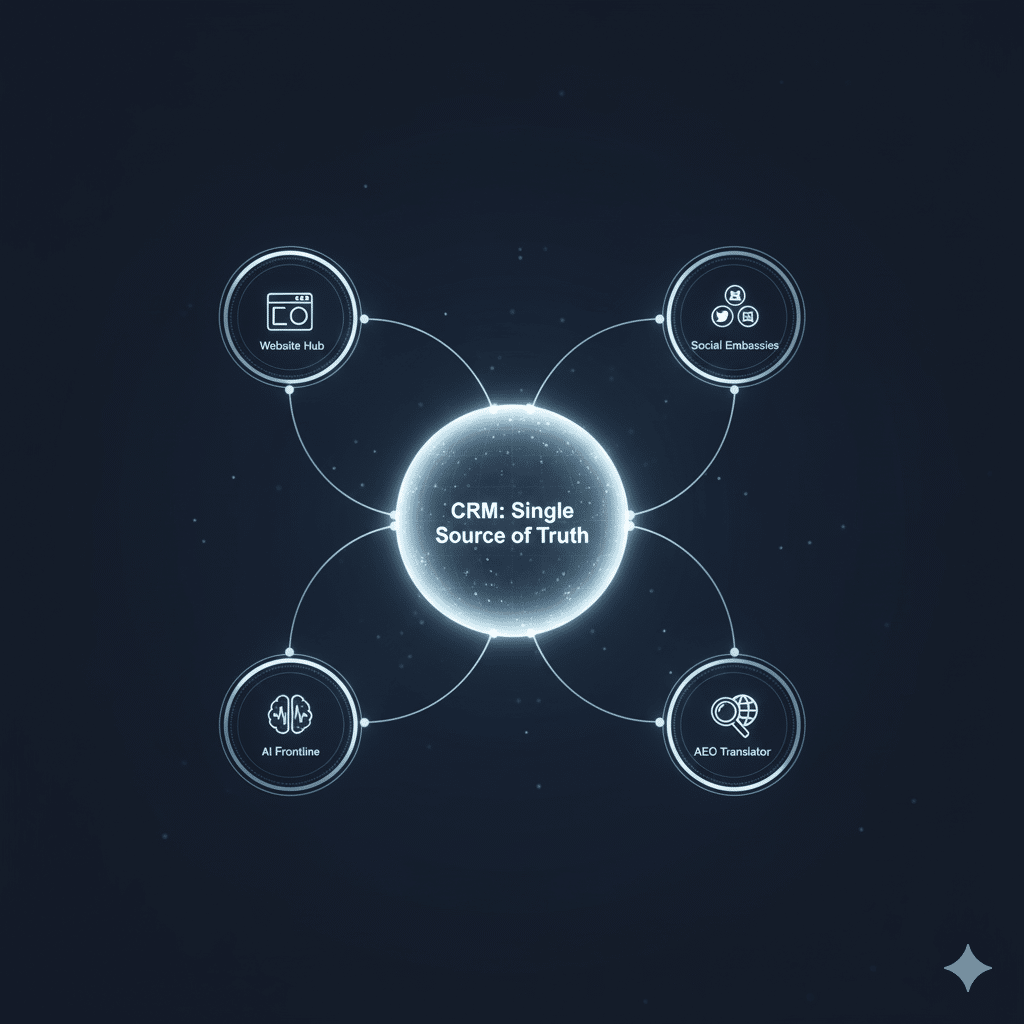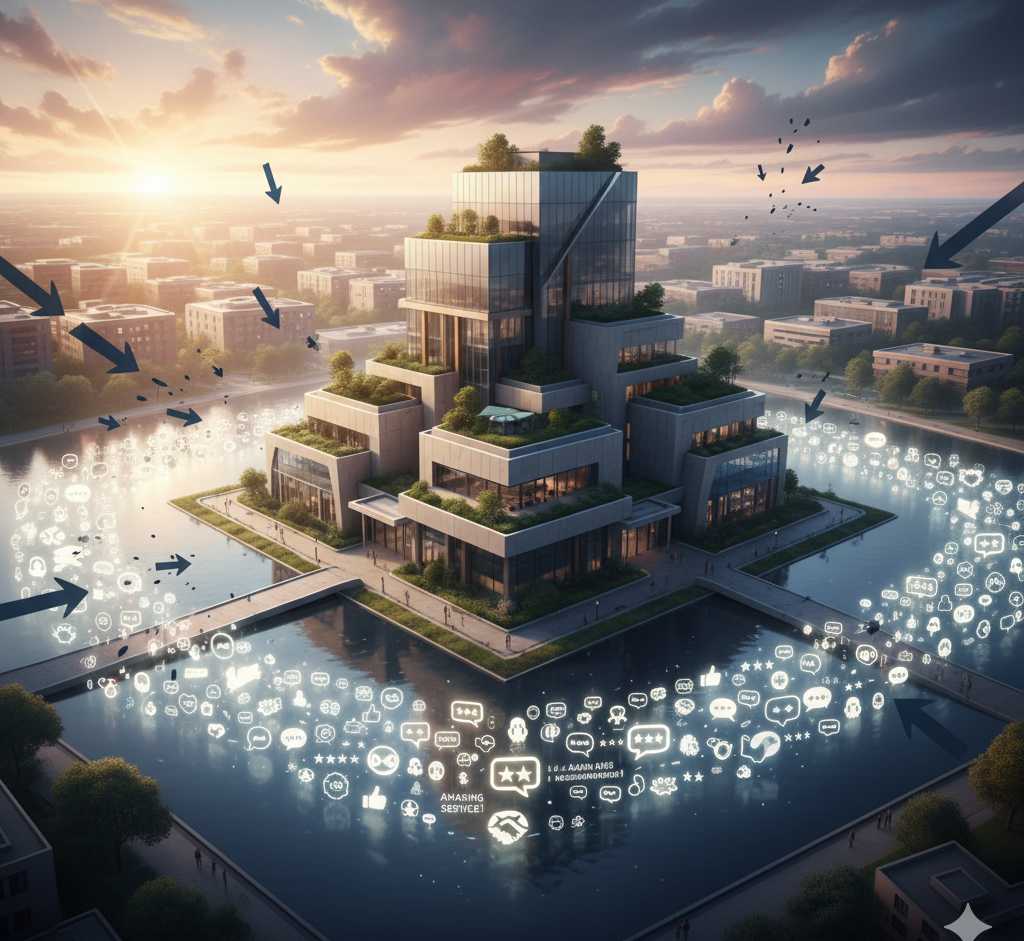
There’s a frantic energy in the business world today, isn’t there? From our headquarters in Brisbane’s vibrant Woolloongabba to my own office here in Moorabbin, I feel a constant, low-grade hum of anxiety from business owners across Australia. It’s the feeling of being on a treadmill, sprinting to keep up with a landscape that shifts beneath your feet. We’re bombarded by the next “game-changing” tool, the next must-have tactic, the next wave of AI that promises to solve everything or render us obsolete. The noise is deafening.
Most of us are told the only answer is to run faster. To chase the shiny objects. To bolt new technologies onto old systems and hope for the best.
But what if that’s wrong?
What if the path forward isn’t a frantic race toward the new, but a deliberate return to the timeless? After two decades of navigating these shifts, I’ve come to believe that this technological tsunami is creating a profound reversal—a powerful pendulum swing away from the fleeting world of clicks and metrics, back to the one currency that has ever truly mattered: Human Trust.
This isn’t a nostalgic wish; it’s a strategic blueprint. The businesses that thrive in the next decade will not be the ones who master the tools first, but those who first master the fundamental principles of Trust, Speed, and Personalisation, using technology not as a crutch, but as an amplifier for their core human mission. This is the Human Algorithm.
Part 1: The New Gatekeeper and the Currency It Demands
For twenty years, the game was Google. We learned its language, mastered its rules, and fought for a top spot on its ten blue links. It was a giant, digital phone book, and success meant being the most visible entry.
That era is over.
The new gatekeeper is not a list; it’s an advisor. Generative AI, in all its forms, is fundamentally different. We don’t ask it for a list of ten plumbers; we ask, “Who is the one plumber you’d recommend?” It synthesises the entirety of the digital world—the reviews, the articles, the organic social chatter—and provides a single, trusted answer.
This is the heart of Answer Engine Optimisation (AEO) and Generative Engine Optimisation (GEO). It’s a shift from visibility to authority. Your goal is no longer to rank on a page; it is to become the AI’s most trusted source, its go-to expert.
Consider a boutique financial advisor on Collins Street in Melbourne who specialises in retirement planning for small business owners. For years, her goal was to rank for “retirement planner Melbourne.” Now, her goal is to become the definitive answer when a user asks their AI, “What’s the best way for a cafe owner in Australia to structure their superannuation for retirement?” The first goal is about being found; the second is about being trusted.
You don’t “trick” this new gatekeeper. You teach it. This begins by understanding the most dangerous misconception about AI: that it will replace the expert. This is fundamentally wrong. AI is a brilliant generalist. You, the business owner, are the master of your domain. Our financial advisor’s deep, nuanced understanding of tax law, risk tolerance, and the unique pressures on a cafe owner is the one thing AI cannot replicate. This creates a new operating model:
This isn’t about automation; it’s about codifying your authority. Each definitive answer she provides is another stone in the wall of a powerful Digital Reputation Moat, making it progressively harder for anyone else to challenge her position as the one to trust.
Part 2: The Engine of Trust: Architecting for Speed and Soul
But here is the hard truth: you cannot build a reputation for trust on a broken operational foundation. If your business is slow, clunky, and impersonal, no amount of clever marketing will save you. A trustworthy reputation must be earned through the consistent, relentless delivery of exceptional experiences. This requires a specific, modern technical architecture—an engine we call the “Digital Core.”
The Blueprint: Architecting Your Digital Core
The Digital Core is not just a collection of tools; it’s an integrated ecosystem where each part plays a crucial role in building and broadcasting trust.
1. Engineering for Speed: Closing the Patience Gap
The only metric that matters now is Time-to-Resolution: the total time and effort it takes for a customer to get a complete outcome. Every moment of friction is a hidden tax on their patience. Consider the workflow of one of our senior developers. A client sends a frantic voice note about a website bug. He uses voice for speed to dictate an instant acknowledgement. At his desk, he asks his AI for structure to transcribe it into a bug report. Then, he uses his keyboard for precision to debug the code. This is “modality fluency”—a fluid, hybrid workflow that ruthlessly eliminates friction because the culture values the client’s peace of mind.
2. Delivering True Personalisation: The Channel-Less Experience
A customer interacts with an AI bot, emails a question, then calls to place an order. In a disjointed business, this is three frustrating conversations. With a “single source of truth” powered by your Digital Core, the sales representative on the phone sees the entire history. “I see you were chatting with our AI about the X-Trekker tent,” she says. “It’s a great choice.” This is a seamless, channel-less experience that builds profound trust.
However, this power comes with a profound responsibility. Earning trust isn’t just about efficiency; it’s about being a transparent and ethical guardian of the customer data that makes this possible. The “Human Algorithm” demands that we treat customer information not as a resource to be exploited, but as a privilege that must be continuously earned through integrity and respect.
The Human Layer: Culture is Your Operating System
A sophisticated Digital Core is just hardware. Your culture is the operating system that runs on it. The technology is useless without a team that embodies the right principles, and that culture must be actively cultivated.
This means fostering psychological safety, where your team can experiment with new tools without fear of failure. It means investing in continuous training to build “modality fluency.” And critically, it means aligning incentives with a new scoreboard. You stop rewarding vanity metrics like clicks and lead volume and start celebrating what truly matters: First-Contact Resolution Rate, growth in Customer Lifetime Value (CLV), and a stellar Net Promoter Score (NPS). These are the vital signs of a business that runs on trust.
Conclusion: The Only Moat Left to Build
For years, we’ve been told that success lies in the next piece of software, the next platform, the next technical edge. But technology is becoming a commodity. When everyone has the same tools, the only differentiator left is the one thing that cannot be bought or automated: a business and a culture architected from the ground up to deliver an exceptional human experience.
The most critical integration is not between two pieces of software, but between your technology and your people. The window for debate is closing. The businesses that thrive will be those who stop chasing the noise and start building their foundation on the bedrock of these principles.
This brings every leader to the one question that will define success for the next decade:
“Is the core of our business—our technology, our processes, and our culture—truly built to earn, keep, and amplify human trust?”
Because in the end, that’s the only algorithm that has ever truly mattered.
Prefer to listen or watch? I’ve recorded an audio version of this article and created a video overview.
Perfect for your commute or a visual briefing.





